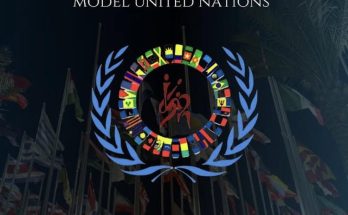The April 25 earthquake and 50 aftershocks have not only devastated Nepal, but has also crumbled its cultural heritage, dealing a blow to the country’s tourism-centric economy.
Centuries-old structures lie in ruins, with many of them severely damaged. Social, religious and urban focal points of Kathmandu, the three Durbar Squares of Kathmandu, Bhaktapur and Patan, that housed several ancient temples, palaces and structures of historical note, were described as “almost fully destroyed”.
The iconic Dharahara tower, that stood tall for nearly two centuries, was reduced to a stump.
The extent and degree of loss was acknowledged by Irina Bokova, the director general of the UNESCO, when she said, “I am deeply aggrieved by the magnitude of human loss caused by the earthquake in Nepal.”, “I am also shocked by its devastating impact on the unique cultural heritage in the country, in particular extensive and irreversible damage at the World Heritage site of Kathmandu Valley.” The UNESCO has promptly sent a team to Nepal to assess the damage.
The loss of centuries-old temples, palaces and monuments is more than a symbolic loss of a slice of living history for Nepal and the world. The tourism industry is the worse for it; the disaster’s ripple effects on tourism, a pillar of the city’s (and nation’s) economy, will hit the local communities, who relied on tourism in these areas, the hardest.
With the quake hitting smack in the middle of peak tourist season (there were close to 300,000 foreign tourists in Nepal on April 25), the scare factor will be a potent deterrent for foreign tourists in the near future at least. Also, the deaths of 18 mountaineers at the Everest base camp and the destruction of the scenic lake town of Pokhara, a hot favourite for less strenuous treks, will probably discourage even the hardiest of adventure seekers from coming to Nepal anytime soon.
Largely an agricultural nation with a per capita of only $634 (2013) making it a lower income country, tourism is a major source of revenue for the state. Foreign exchange earnings from tourism make up roughly 20% of the country’s goods and services exports. The sharp decline in tourist dollars will make the task of recovery and rehabilitation even more arduous.
Some economists said they believe reconstruction after natural disasters can usher in a period of better economic growth, as infrastructure is built back better in developing countries. Others say there is little empirical evidence to support such claims, as any positive impact from aid is negated by the destruction of factories, private property and other infrastructure.
To alleviate the immediate economic effects of the disaster, such as weakening of the Nepali rupee, the International Monetary Fund is ready to give Nepal balance-of-payment support to underpin the country’s economic stability.
But as Ilan Noy, an expert on the economics of disasters at the Victoria University of Wellington in New Zealand told the Wall Street Journal, “It’s not only money that you need for reconstruction, but also human knowledge and a functioning government,”
One should hope that the contentious political atmosphere gives way to a united front in the months to come to give the people a functioning government, to provide succour and leadership, in this time of bewildering grief.
If they do not do so, there is a danger that Nepal could well be on its way to becoming another Haiti, another small economy, which suffered a devastating earthquake five years ago and even after $3.5 billion in aid the Caribbean country continue to suffer from political violence.
Author Profile
- India Writes Network (www.indiawrites.org) is an emerging think tank and a media-publishing company focused on international affairs & the India Story. Centre for Global India Insights is the research arm of India Writes Network. To subscribe to India and the World, write to editor@indiawrites.org. A venture of TGII Media Private Limited, a leading media, publishing and consultancy company, IWN has carved a niche for balanced and exhaustive reporting and analysis of international affairs. Eminent personalities, politicians, diplomats, authors, strategy gurus and news-makers have contributed to India Writes Network, as also “India and the World,” a magazine focused on global affairs.
Latest entries
 In ConversationJuly 26, 2024India-Italy defence collaboration can extend to third countries: Anil Wadhwa
In ConversationJuly 26, 2024India-Italy defence collaboration can extend to third countries: Anil Wadhwa In ConversationJuly 23, 2024Italy views India as a key partner in Indo-Pacific: Vani Rao
In ConversationJuly 23, 2024Italy views India as a key partner in Indo-Pacific: Vani Rao DiplomacyJune 29, 2024First BRICS unveils a roadmap for boosting tourism among emerging economies
DiplomacyJune 29, 2024First BRICS unveils a roadmap for boosting tourism among emerging economies India and the WorldJune 11, 2024On Day 1, Jaishankar focuses on resolving standoff with China
India and the WorldJune 11, 2024On Day 1, Jaishankar focuses on resolving standoff with China






